#rmit journal
Explore tagged Tumblr posts
Text
A team of researchers from the URV and the RMIT University (Australia) has designed and manufactured a surface that uses mechanical means to mitigate the infectious potential of viruses. Made of silicon, the artificial surface consists of a series of tiny spikes that damage the structure of viruses when they come into contact with it. The work is published in the journal ACS Nano. The research has revealed how these processes work and that they are 96% effective. Using this technology in environments in which there is potentially dangerous biological material would make laboratories easier to control and safer for the professionals who work there.
Continue Reading.
158 notes
·
View notes
Text
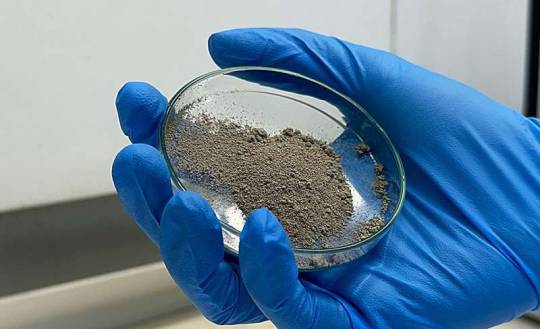
Nanodiamonds could hold key to cool clothing
Researchers from RMIT University are using nanodiamonds to create smart textiles that can cool people down faster. Their study, published in the journal Polymers for Advanced Technologies, found fabric made from cotton coated with nanodiamonds, using a method called electrospinning, showed a reduction of 2–3°C during the cooling down process compared to untreated cotton. They do this by drawing out body heat and releasing it from the fabric—a result of the incredible thermal conductivity of nanodiamonds. Project lead and Senior Lecturer, Dr. Shadi Houshyar, said there was a big opportunity to use these insights to create new textiles for sportswear and even personal protective clothing, such as underlayers to keep fire fighters cool. The study also found nanodiamonds increased the UV protection of cotton, making it ideal for outdoor summer clothing.
Read more.
#Materials Science#Science#RMIT University#Diamonds#Nanotechnology#Nanodiamonds#Textiles#Smart materials#Cotton#Electrospinning#Heat flow
21 notes
·
View notes
Text
The image was the first official photograph released following the princess' abdominal surgery in January and was circulated by major news and photography agencies.
However, four of the largest agencies issued a "kill notice" for the image, asking those who were using it to remove it.
AP reported the reason for the image recall was: "It appears that the source [Kensington Palace] has manipulated the image in a way that did not meet AP’s photo standards."
"The photo shows an inconsistency in the alignment of Princess Charlotte’s left hand," AP stated.
Reuters later reported it had removed the photo for similar reasons to AP.
"Reuters picture editors said part of the sleeve of Kate's daughter's cardigan did not line up properly, suggesting that the image had been altered," it said.
"Reuters could not immediately establish how, why or by whom the alteration had been made.
"Leading picture agencies distributing news photographs prohibit the publication of images that have been overly edited."
The Reuters Handbook of Journalism states that Photoshop can only be used in limited matters like formatting, cropping, sizing and balancing tone and colour.
"Materially altering a picture in Photoshop or any other image editing software will lead to dismissal," it says.
AFP and Getty Images also issued their own notices and removed the image from their sites.
The photo is still up on the Princess' social media accounts.
Dr TJ Thomson, senior lecturer in visual communication and digital media at RMIT, says the image shows clear evidence of manipulation.
"The most obvious example is around Princess Charlotte’s left sleeve cuff. The left side of Princess Kate’s hair and her right hand also appear to be unnaturally blurred," he says.
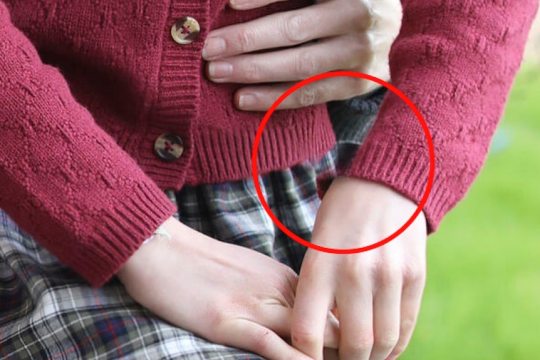
Dr Thomson also ran the image through a forensic analysis software called WeVerify.
"That suggests that in addition to the cuff area on Princess Charlotte, the branches in the top-right corner of the image were also manipulated."
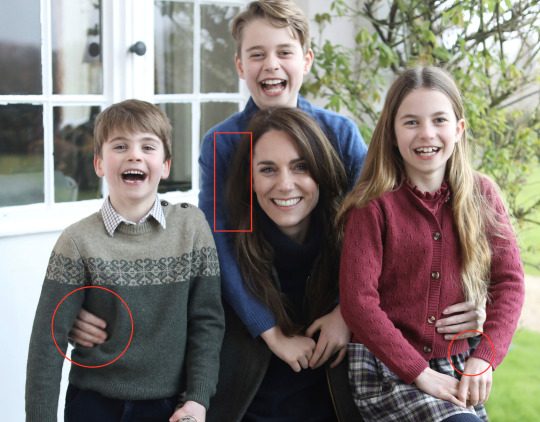
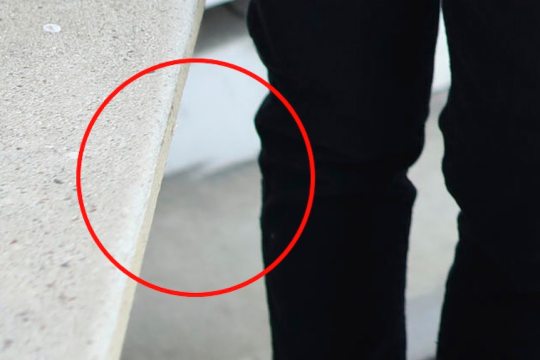
#media#australia#kensington palace#PR fail#fail!#british royal family#William The Prince of OWN GOALS#prince william#William The Prince of Wales#William The Terrible#kate middleton#Catherine The Princess of Wales#prince george#princess charlotte#prince louis#scandal!#ESCANDALO!!!
10 notes
·
View notes
Text
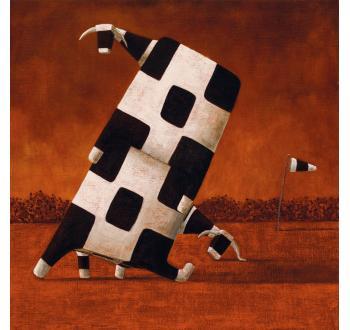
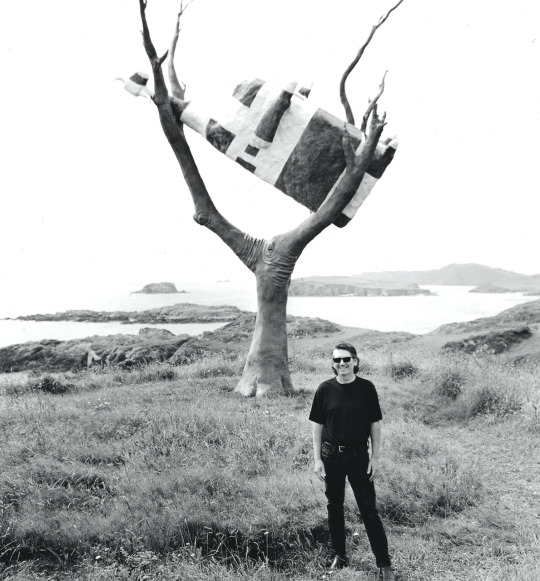
John Kelly has been described variously as an awkward bugger (Fergal Gaynor, 2007) and a free radical (Guangzhou Triennale, 2008), and whilst these observations are no doubt true his awkward radical behaviour leads to some interesting results.
John Kelly was born in 1965. His father, from Cork, and mother from Bristol, the family immigrated to Australia the same year. Due to his birth, heritage and circumstance John now holds three passports and therefore is an Englishman, an Australian and an Irishman. Kelly has lived in all three countries and for the past two decades has resided in west Cork, Ireland. His work has been collected into the Yale Center for British Art, USA, the National Gallery of Australia, the Crawford Gallery, Ireland and the Guangdong Museum in Guangzhou China, MONA, Tasmania, Art Gallery of New South Wales, Art Gallery of New South Wales, etc.
In 1985 Kelly obtained a Bachelor of Arts (Visual Arts Painting) from RMIT University, Melbourne, where he also completed his Masters of Arts in 1995. As a winner of the 1995 Anne & Gordon Samstag International Visual Arts Scholarship, he travelled to London to study as an Affiliate Student at the Slade School of Art from 1996 to 1997.
As a painter, sculptor and printmaker Kelly engages across mediums and also writes, having written for Art Monthly (Australia & UK) and Circa magazine (Ireland), The Jackdaw (London) and Daily review (Australia). In 2017 he was nominated for a Walkley Award for Arts Journalism.
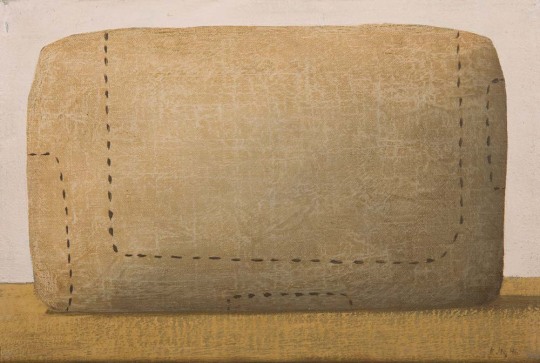

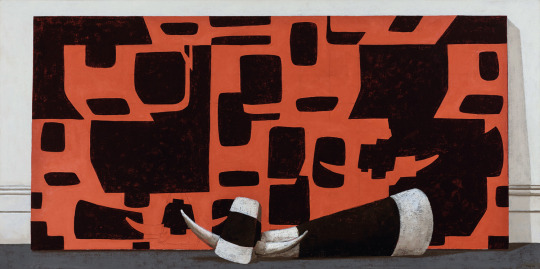
7 notes
·
View notes
Text
Novo medicamento feito de ouro é mais eficaz que quimioterapia
Um novo medicamento à base de ouro pode retardar o crescimento de tumores em animais em 82% e atingir cânceres de forma mais seletiva que medicamentos quimioterápicos, revela um estudo realizado por pesquisadores australianos e indianos. A pequisa do Instituto Real de Tecnologia de Melbourne (RMIT) publicada no European Journal of Medicinal Chemistry revela um novo composto que é 27 vezes mais…
0 notes
Text
Week 12 - Advertising + Journal Discussions
Wednesday
from comedic ted talks by an advertising specialist, sarcastic rebranding’s of cereal to pants less subway riders in New York City. The 12th week of this semester has led me right back to 2020 where I undertook a diploma of public relations at RMIT. Funnily enough this Wednesday was a delightful mockery of my former studies, the joke that is advertising, marketing, communications deserve to be mocked. Not saying that I don’t think the jobs are important, I grew up with free to air commercials and loved many of them, in fact, I sometimes turn on my old tv just to watch the commercials because I miss them so much, the contradict and redact my previous statement, the advertising material presented in class is old school, its what I grew up on in my childhood then in my teens we were plastered with internet advertising, everything started to become shorter, they needed the click so they threw out the bait. Advertising has now extended beyond the traditional definition of paying for an ad. Whenever creative content is produced and exported to the internet great deals are done in a way to try and get it picked up in a algorithm, whether its with a funny name or over the top thumbnails, people are advertising their content to the public more than ever. The ads that are being paid for now are far shorter than on tv, because people have the ability to skip, open a new tab or even use adblockers (although youtube is trying to crack down on that) advertisers need to be more direct and to the point, people are no longer forced to sit infront of their idiot box for their 6:00pm Simpsons episode to resume.
Friday
The final class just finished, and I am currently sitting in the Glyn Davis building feeling all sorts of emotions, knowing that one of my favourite subjects at university is done. delighted that I found David's World of Perception in semester 1 with remaking reality, but I'm sad that I now only have 1 more of his subjects left in my university catalogue. The electronic arts was an entirely different collection of topics I wouldn’t have expected; I thought the issue would be Photoshop, illustrator, video editing, etc. Instead, I discovered the Bauhaus, the shock of the new optical illusions, the Silk Road. The place I'm sitting is so marvellous that it could have easily fit into the week of architecture. The final EA session ended with a laid-back exchange of people projects; we saw soviet arcade machines and motion painting paired with Prelinger archived films and handmade paper journals. I even got to show the class some of my own animations, which was excellent; the credits rolled with a stroll into the botany garden, where David sent us off with a big thank you (met with a round of applause). Thank you. Let's hope we can get the approval committee to hurry up and get remaking Reality 2, Electronic Arts 2 and Secret Life 2 approved as soon as possible
1 note
·
View note
Text
Starting Monday, passengers flying on Korean Air may be asked to step on a scale before boarding their flight.
The exercise, which will last about three weeks, is required by law and applies to all Korean flag carriers, a Korean Air representative told CNBC.
The law requires airlines to weigh passengers and their carry-on luggage at least every five years and is “crucial for safety of flight operations,” the representative told CNBC.
The announcement was met with backlash from the public, according to local media.
A notice detailing the exercise — set to begin at Gimpo International Airport Monday, followed by Incheon Airport next month — has been removed from the airline’s website, due to “sufficient notice and media coverage,” according to the airline.
Is it reasonable to weigh passengers?
“Definitely not,” said Vance Hilderman, CEO of the aviation safety company Afuzion.
At least not for the purpose of safety, he said.
“If you’re at a small Bombardier, a small Embraer jet, and we had 10 very obese people … it could make a small difference,” he said. “On commercial aircraft, anything from a 737 and above you know, 120 people, we have it built in.”
Aviation software can adjust for weight changes, air density and other factors, which is why safety isn’t compromised even in situations where passenger makeup is atypical, such as an early morning flight of mostly businessmen, who tend to weigh more than the average traveler, he said.
Overall, a significant weight increase per passenger would be eclipsed by the weight of fuel, cargo and the aircraft itself, said Hilderman. “Fuel is 20 times more than the passenger weight,” he said.
But Shem Malmquist, an instructor at Florida Tech’s College of Aeronautics, said random weight samples are a good idea.
“We use average weights of passengers, but people are getting a lot heavier,” he said. “Three hundred people that weigh more than average can put an airplane significantly over weight, and all of our performance calculations — runway length, climb, obstacle clearance, landing distances, altitude capabilities — all are dependent on weight, among other things.”
Hilderman agrees that people are getting bigger, but he said passengers now differ in other ways too.
“Americans are getting heavier. So are Chinese, so are Koreans,” he said. “But we’re also flying younger … so it’s actually offset the average human’s weight increase.”
A study published in 2019 in the Journal of Transport & Health found that regions with higher obesity prevalence “may begin to see significantly compromised safety margins if increasing weight trends continue.”
Jose Silva, an associate professor at Australia’s RMIT University’s School of Engineering and one of the study’s authors, told CNBC that he thinks airlines are reluctant to weigh passengers because of the sensitive nature of the topic.
“There is also a lack of understanding of the safety gains which could be obtained if there were more accurate means to ascertain the passengers’ weight, instead of relying on standards,” he said.
A whistleblower complaint filed in 2021 alleges that the U.S. Federal Aviation Administration has failed to recognize safety issues caused by relying on average passenger or baggage weights that no longer reflect the U.S. population.
Where airlines weigh passengers
Air New Zealand weighed passengers in June for reasons, it said, related to safety and fuel efficiency.
Finnair did the same in 2017, and Hawaiian Air has conducted multiple passenger weight exercises on flights between Honolulu and American Samoa. (The now defunct Samoa Air used to charge passengers by their weight, according to Reuters.)
Flyers in the United States likely won’t be weighed, said Hilderman, even though an FAA advisory circular published in 2019 stated that airlines can weigh passengers.
It’s a different story in Europe, where carriers follow European Union Aviation Safety Agency (EASA) regulations.
EASA weighed nearly 23,000 passengers in 2008 and 2009 and found that average passenger weight had increased by 3 to 5 kilograms (6.6 to 11 pounds). A subsequent report published in 2022 found that mean passenger weight increased slightly since 2009, for an average of 82 kg (181 pounds) for men and 68 kg (149 pounds) for women.
Periodic weight assessments — of passengers and other items on board — can help airlines determine if weight estimates are still accurate to offset the amount of cargo they carry, said Hilderman.
But “there’s a little more to this mystery,” he added.
“In Europe, they’re a little more rigorous about individual rights with privacy,” he said. “With EASA, they want to protect the passengers and say: Look, the passengers are getting larger, so airlines, we want you to provide a minimum pitch distance on your seats.”
Commercial airline seating is based on average passenger weight from the 1950s to 1970s, Hilderman said. Since then, people have gotten bigger, but seat pitches have dwindled, he said — “29 inches in some cases, it’s absolutely ridiculous.”
A hot-button topic
Passenger size on planes is a controversial topic — with oversized flyers lodging discrimination allegations over Lilliputian plane aisles and seat sizes, and smaller travelers publicly venting about seat encroachment.
But unlike other industries that service heavy people — from makers of chairs to toilets to amusement park rides — the airline industry hasn’t enlarged seats.
“Some have proposed that obese passengers be required to pay for two seats in order to not make other passengers uncomfortable, but that lets the airlines escape any responsibility,” said Nick Gausling, a consumer services business consultant and managing director of Romy Group LLC.
Gausling noted that while other industries have been pressured to prioritize customer experience, “consumers have very little choice to take their business elsewhere” when it comes to airlines.
Tigress Osborn, the executive director of the National Association to Advance Fat Acceptance, told CNBC that most major airlines have responded with three options for overweight travelers: pay for pricier tickets that come with bigger seats, purchase a second seat, or stay home.
“Fat people deserve to travel for pleasure just like everyone else, and we also need to remember that air travel is for work, for family obligations, and for other responsibilities, too,” she said. “Our taxes help support this industry, and we deserve to be accommodated safely and comfortably, with access to accessible seating at all price levels.”
Ideas to help larger passengers
Hilderman said airlines can sell second seats to plus-size travelers at a heavily discounted rate.
Or they can reserve half a dozen seats for larger people, which passengers could privately register for online, using height and weight details from their driver’s licenses, he said.
Those seats could be sold at a small surcharge, and if not booked by qualified passengers the week before the flight, released to anyone willing to pay for them, he added.
Any hope for wider seats?
As to whether airlines will increase seat sizes for everyone, Hilderman said that while it’s mathematically possible, it’s not practical.
“Fuselage diameters have been predetermined,” he said, referencing the main body of the aircraft. “We currently have 29,000 commercial aircraft flying, and we only make about 1,500 per year, so it would take 20 years to replace the entire fleet.”
Refitting planes with wider seats means narrowing the aisle, which is already a tight squeeze, he said. To widen the aisle, one seat from every row would need to be removed, resulting in a 20-25% ticket price increase across the board, he said.
“Most people don’t look at what kind of aircraft they’re flying, and they have no idea what the seat pitch or width is,” said Hilderman. “They’re simply buying on price — and the airlines know that.”
Arnold Barnett, a management science and statistics professor at the MIT Sloan School of Management, told CNBC that most flyers are willing to endure current seat sizes in return for lower fares.
If seating changed, “airfares would have to go up, and flying would become unaffordable to passengers on limited budgets.”
For many, a tight airline seat is better than a seat on a bus, he said.
0 notes
Text
Best Dolby Atmos Soundbar of 2023
Why You Can Trust CNET Our expert, award-winning staff selects the products we cover and rigorously researches and tests our top picks. If you buy through our links, we may get a commission. Reviews ethics statement These are the best TV-friendly speakers for immersive audio in the home. Ty Pendlebury is a journalism graduate of RMIT Melbourne, and has worked at CNET since 2006. He lives in…

View On WordPress
0 notes
Text
Hard News Story - Journalism Society President Speech
Hard News Story - Journalism Society President Speech
RMIT Journalism Society president Loughlin Shannon retired from the presidency on Monday due to issues “so great” they posed an “existential threat”.
The issues Loughlin tackled were governance and service delivery.
One month prior to announcing his retirement he said that he would be “lucky to last another month in this role.”
The Journalism Society team set clear standards of opportunity, networking with the community and developing journalistic ambitions, said Loughlin.
Second-year Journalism student Lily Kristanto has stepped in as the next president of the RMIT Journalism Society.
“I think Loughlin stepped down from the role because of his own personal commitments,” said Miss Kristanto.
“I think that the Journalism Society has a lot of potential to do a lot of great things this year,” said Miss Kristanto.
Loughlin really helped to “revamp” the Journalism Society especially after COVID said Miss Kristanto.
What the team and I want to focus on this year is to “emphasise and create a sense of community”, said Miss Kristanto.
The Journalism Society acts as a “gateway” to a lot of different opportunities for journalism students, said Miss Kristanto.
The Journalism Society's principles are “opportunities, networking and development” said Miss Kristanto.
“This year we wanted to have stronger ties between the other media bodies at RMIT like the Swanston Gazzet, Media Communications Collective, City Journal and Bowen Street Press,” said Miss Kristanto.
“This year I would love to create a media industry day at RMIT for journalism students to have the opportunity to hear from different media organisations,” said Miss Kristanto.
“I would like to bring some successful alumni who have recently graduated back to hear any advice they have to give,” said Miss Kristanto.
RMIT Journalism Society President: Lily Kristanto
Email: [email protected]
500 WORD REFLECTION - Journalism Society President Speech
The first challenge I faced with this assignment was deciding what speech I was going to cover. I was torn between the Patricia Karvellas lecture and the JS speech. I chose the JS speech and was faced with my next challenge which was figuring out my angle. This was difficult because the journalism society president’s speech is roughly 3 minutes long and there isn't much content to break down to begin with. Having to condense something that I already had a small amount of information on made me worry that I would struggle to get to the 300-word limit. My final challenge arrived when it came to deciding whom to interview as my second source. At first, I contacted Alexandra Wake seeing as she is the Program Manager of Journalism at RMIT, she unfortunately informed me that the journalism society was an entirely student-run organisation. My next choice seemed obvious, I decided to interview the person who was set to step into the role, Lily Kristanto. A hard news story conveys facts and information in a fast, easy, immediate, efficient and clear way that’s designed for the audience to decide for themselves. In a hard news story, the most important thing is the facts, each sentence in a hard news story should be 25 words or less and it must contain no adjectives. Your story should be as objective as possible while maintaining a sense of balance. the story itself should be short pacy and simple, knowing your angle and putting your angle in the lead are crucial. News always comes first then you can worry about arranging the rest of the information in descending order of importance. When writing a hard news story, use The Inverted Triangle formula to write the Who, What, When, Where, Why and How in the first few sentences. Your writing needs to be easy to digest so make sure you cater to an audience of all ages, education levels and backgrounds. Having an accurate understanding and use of news style is vital when it comes to hard news, such as active voice using past tense to refer to people (she said, he said) both sides should be represented equally. avoid using words that create bias or a sense of emotional attachment to the story. Don't use unnecessary words such as ‘very,’ ‘quite’ or ‘that,’ etc. Hard news is not about the issues, it’s about the most recent happening related to the issue. The speech itself is not ‘the news’, it's what you think your audience will find to be the most important thing that was said in the news. Don’t use ellipses, quotes or brackets after quotation marks. In hard news writing the most important things are accuracy, honesty and fairness. It's your job as a journalist to uphold a code of ethics and although it is impossible to be completely non biased we must do our best. But don't be afraid to be dynamic and add a little flair.
0 notes
Text
TUTORIAL WEEK 7: OBSTACLES UNIVERSITY STUDENTS FACE IN THE MODERN TERTIARY ENVIRONMENT
Alexander Scott, currently studying a Bachelor of Journalism at RMIT, it's his second time being a first year student.
"I did a year of science at Melbourne, but it turned out it wasn't my thing, I wasn't enjoying it." said Alexander.
Up to 10 percent of tertiary students are changing from one degree to another, according to figures from some of Australia's leading universities.
Alexander’s previous science degree was not for him.Alexander says, "It was time for a change." He finds his course this time round much more “interesting, for sure”.
For Alexander, he thought the biggest obstacle in transferring into RMIT, "Initially I thought it would be harder to get used to", as he would be with an entire new group of people, but the transition to RMIT "really wasn't hard".
"I didn't even know what the coursework would be like", he says. When he transferred to Journalism, he had no idea what the course actually entailed in terms of work.
"It's a very diverse range of work," he says, "makes it [the course] more interesting and less monotonous".
As well as dealing with being first year in a new course again, Alex is also figuring out how to tackle his social life in a new University..
"[Last year] I took on too much of the social aspect and honestly it was bad prioritisation, but this year I'm trying to focus more on the course and myself," Alexander said.
Last year, Alexander moved out alone immediately after graduating year 12, but this year he lives with a roommate and he thinks it makes all the difference.
"It takes a lot to motivate yourself when you've got no one else holding you accountable, at least for me." Alexander says, "Now that I'm living with someone, it's kind of made this year a lot better."
When doing the same things, it's better to have someone with you, “We’re on it together.” Alexander said.
"There’s inherent struggles in living alone, but when you’ve got someone with you it makes it a lot easier.”
0 notes
Text
Assignment #1 ( Covering a public speech)
Patricia Karvelas calls out lack of diversity in Journalism industry.
First Nations people experience pressure from society to “agree” on everything while only having stories of “conflict” and ��doom” reported about them said Journalist Patrcia Karvelas.
According to Karvelas “social unrest thrives where we lose the ability to understand each other, "at the RMIT capitol theater during her professorial lecture.
Ms. Karvelas lecture covered “power, diversity and gatekeepers,” and why it needed to be challenged the lecture took place March 9th.
The lecture examined the lack of “diversity” within journalism and how “successful” stories about diverse communities were not reported on but instead “conflict” and “gloom” were.
Ms. Karvelas drew on her own experiences in newsrooms being a queer “Greek woman,”.
Breeanna Maynard a queer GurnaiKurnai person who is a small business owner in East Gippsland believes “conflict” is needed.
“Conflict is an important part of change and differing opinions in the first nations community should be valid,” said Breeanna Maynard.
“White people shouldn’t have opinions on matters affecting the aboriginal community because it ends up invalidating the whole community, "Maynard said.
Ms. Karvelas used her previous experience as an “indigenous affair reporter,” to add perspective to issues the first nations community are experiencing in the media.
“No one ever expects all white people to agree on things,” but as soon as first nations people disagree “lets smash everything they have to say,” Ms. Karvelas said.
Journalist report stories about conflict within the first nations community to “Elevate conflict for conflicts sake,” even though “it’s democracy,” Ms. Karvelas said.
“Voices and experiences should be first nations when it’s relevant to our stories,” and “not anyone else,” said Maynard.
“Our good stories are gatekept because they don’t follow the stereotype and that makes it less interesting too white people,” said Maynard.
Contact for Breeanna Maynard: [email protected]
Hard news story.
My first hard news story had many ups and downs.
Firstly, I recognize that I was able to obtain a source easily. I recognize that they were not the most newsworthy source out of the others I contacted, but I was able to get a young queer First Nations voice as my source. Which was what I aimed for and thought would suit the speech. sources I contacted sources such as elders from Gurnai country they were probably reluctant to speak. One Aunty declined, and others never replied to my emails.
I conducted a phone interview since my source was four hours away in Orbost East Gippsland, and neither of us could make a trip that suited us both. A challenge I found with phone interviews is how awkward they can be. I couldn’t follow techniques to put my interviewee at ease, such as eye contact and smiling. To combat this, I made myself sound enthusiastic and told a few jokes to appear more casual. I also had a list of questions, but I tried to make it a conversation and steer it organically into the direction of what I wanted to ask.
A big challenge I encountered was how journalism writing is different from essay writing in secondary school. As I graduated in 2022, essay-style writing was engrained in me. It took me a while to start using simpler words, such as "said" instead of "shrieked” I second guessed myself a lot throughout that process. Another struggle was keeping each sentence under 25 words and getting to the point each time, I had to be sure each word I wrote was needed and wasn’t taking up space.
To uphold journalism's democratic function, I
I did no harm to my source Breeanna Maynard. I wrote down their quotes accurately and did not take them out of context and checked while writing my hard news story that I represented what they said correctly.
I told Maynard that they had the freedom to say anything they wanted in response to my questions and that I am unbiased throughout my writing of my hard news story.
Throughout my hard news story, I kept it balanced with the number of quotes I used for Maynard and Karvelas. I did not give one source more part of the story than the other.
I kept both Maynard and Karvelas’s quotes accurate. I did not change them, nor did I change the context.
I attempted to be fair in my hard news story as I wanted to feature a voice who has experienced issues brought up by Karvelas. I chose Maynard as my source because they are first nations and experience issues from the media portraying their community as doomed.
A tip I learned from one of the lectures was to read out news stories while having a heavy bass song playing in the background. I believe it has helped and I’ll be reading out my news stories to Daft Punk from now on.
1 note
·
View note
Text
University
How I intend to approach the year
I will need to use successful time management strategies to balance my studies in 2023 with part-time work. Therefore, my biggest takeaway from the early part of the semester has been learning what tools I have at my disposal to effectively plan my working and study weeks.
In Academic and Professional Communications class, we were shown two different devices that each provide their own benefits.
The Melbourne University planner (Melbourne University. (2023). Students - Academic Skills - Resources - Time Management - Assignment Planner Assignment Planner (unimelb.edu.au) ) uses a granular approach which enables me to visualise the work I have each week and specific tasks to complete en-route to fulfil my obligations. It allows me to map out the approximate time I want to spend on each part of the task, which helps streamline my focus while undertaking the work.
Another tool available to us is the RMIT planner (RMIT. (2023). Assignment Planner. Assignment Planner | RMIT University) which provides generic prompts to stimulate thinking during assignments ensuring the worthwhile use of my time.

Examples of questions used to generate thoughts in the RMIT planner. By separating them into individual sub-categories, the likelihood of uncertainty is significantly limited.
These are tools which can also be translated into my working life as a journalist which will further assist my balance as I will be able to map out the time each will take and how they can complement each other.
The key challenge from working in a team setting was getting everyone’s schedule to line up and that stunted our overall progress as a trio. We had agreed to do a time and day that suited everyone over zoom, but a lack of communication meant we didn’t keep each other accountable for the amount of work we had done, preventing us from properly rehearsing at this time. A clear issue was the lack of a true leader within our group to facilitate the meetings, which led to our only rehearsal being the morning of the presentation. On reflection, given my availability was the most limited, it should have been me who took the initiative with the planning — though it was something I was conscious I did not want to do as I’ve taken responsibility by default in similar situations in the past and was hoping someone else would step up.
It should however be noted that we all pulled through — the product of us all being clear on our roles, which counteracted our disorganisation and still allowed us to deliver a smooth presentation. However this could probably be more viewed as a sign of three people keeping themselves individually accountable rather than a team remaining on course, which is not a sustainable method when doing group work. The division of focus areas itself presented its own difficulties: given there was to be two key themes between three group members — who hindsight shows did not collaborate enough — the third group member ended up being left with a smaller workload. This is not a criticism of them, who completed all the work we expected them to very well — it was a result of how we thought it was most straight forward to divide the focuses. However, it should be noted that giving everyone a fair share to do is a common issue that leads to students having negative sentiment toward group work (Tucker & Abassi, N, 2016) and we were unable to truly overcome this.
What did work well was the determination of a topic. We consensually agreed we wanted to investigate the social implications of a topic, and each brought different knowledge when it came to the chosen topic area. I believe this shone through in our presentation and, in particular, the ability to bounce off each other and take different angles when answering audience questions.
Tucker, & Abbasi, N. (2016). Bad attitudes : Why design students dislike teamwork. Journal of Learning Design, 9(1), 1–20. https://doi.org/10.5204/jld.v9i1.227
Developing self-management strategies: how have you balanced your study and any external interests?
How have you remained motivated and dealt with any issues that have appeared?
(Comment on the strategies you use, new strategies you learned and are developing and suggest additional skills you might need in your future study or career).
Balancing study with work has been difficult and has resulted in me simply ticking boxes with my study because other areas of my life simply have to take priority. I have had to remain disciplined on Wednesday afternoons, and Thursdays because those are effectively the only times I have to do work outside of class generally. I have tried to remained disciplined through the use of a diary so I am aware of the times I have to study, and spending those times at a library or in a designated study space away from home. I find that I tend to work better when I am separated from the distractions of home which is important given I need to do high volume in a short space of time when I am studying. The addition of a second screen has also made things easier with my study and allowed me to develop a system to ensure my referencing is correct, enhancing my motivation. The second screen allows me to keep the textbook open while making notes which I can then transfer onto a word document on the second screen. This saves me crucial time which allows me spend more time researching and crafting and saves me stress.
1 note
·
View note
Text
An international research team led by RMIT University has designed and manufactured a virus-killing surface that could help control disease spread in hospitals, labs and other high-risk environments. The surface made of silicon is covered in tiny nanospikes that skewer viruses on contact. Lab tests with the hPIV-3 virus -- which causes bronchitis, pneumonia and croup -- showed 96% of the viruses were either ripped apart or damaged to the point where they could no longer replicate to cause infection. These impressive results, featured on the cover of top nanoscience journal ACS Nano, show the material's promise for helping control the transmission of potentially dangerous biological material in laboratories and healthcare environments.
Read more.
19 notes
·
View notes
Text
How to make hydrogen straight from seawater no desalination required
The new method from RMIT University researchers splits the seawater directly into hydrogen and oxygen — skipping the need for desalination and its associated cost, energy consumption and carbon emissions. Hydrogen has long been touted as a clean future fuel and a potential solution to critical energy challenges, especially for industries that are harder to decarbonise like manufacturing, aviation and shipping. Almost all the world’s hydrogen currently comes from fossil fuels and its production is responsible for around 830 million tonnes of carbon dioxide a year*, equivalent to the annual emissions of the United Kingdom and Indonesia combined. But emissions-free ‘green’ hydrogen, made by splitting water, is so expensive that it is largely commercially unviable and accounts for just 1% of total hydrogen production globally. Lead researcher Dr Nasir Mahmood, a Vice-Chancellor’s Senior Research Fellow at RMIT, said green hydrogen production processes were both costly and relied on fresh or desalinated water. “We know hydrogen has immense potential as a clean energy source, particularly for the many industries that can’t easily switch over to be powered by renewables,” Mahmood said. “But to be truly sustainable, the hydrogen we use must be 100% carbon-free across the entire production life cycle and must not cut into the world’s precious freshwater reserves. “Our method to produce hydrogen straight from seawater is simple, scaleable and far more cost-effective than any green hydrogen approach currently in the market. “With further development, we hope this could advance the establishment of a thriving green hydrogen industry in Australia.” A provisional patent application has been filed for the new method, detailed in a lab-scale study published in Wiley journal, Small. Splitting the difference: a catalyst for seawater To make green hydrogen, an electrolyser is used to send an electric current through water to split it into its component elements of hydrogen and oxygen. These electrolysers currently use expensive catalysts and consume a lot of energy and water — it can take about nine litres to make one kilogram of hydrogen. They also have a toxic output: not carbon dioxide, but chlorine. “The biggest hurdle with using seawater is the chlorine, which can be produced as a by-product. If we were to meet the world’s hydrogen needs without solving this issue first, we’d produce 240 million tons per year of chlorine each year — which is three to four times what the world needs in chlorine. There’s no point replacing hydrogen made by fossil fuels with hydrogen production that could be damaging our environment in a different way,” Mahmood said. “Our process not only omits carbon dioxide, but also has no chlorine production.” The new approach devised by a team in the multidisciplinary Materials for Clean Energy and Environment (MC2E) research group at RMIT uses a special type of catalyst developed to work specifically with seawater. The study, with PhD candidate Suraj Loomba, focused on producing highly efficient, stable catalysts that can be manufactured cost-effectively. “These new catalysts take very little energy to run and could be used at room temperature,” Mahmood said. “While other experimental catalysts have been developed for seawater splitting, they are complex and hard to scale. “Our approach focused on changing the internal chemistry of the catalysts through a simple method, which makes them relatively easy to produce at large-scale so they can be readily synthesised at industrial scales,” Loomba said. Mahmood said the technology had promise to significantly bring down the cost of electrolysers — enough to meet the Australian Government’s goal for green hydrogen production of $2/kilogram, to make it competitive with fossil fuel-sourced hydrogen. The researchers at RMIT are working with industry partners to develop aspects of this technology. The next stage in the research is the development of a prototype electrolyser that combines a series of catalysts to produce large quantities of hydrogen.
0 notes
Text

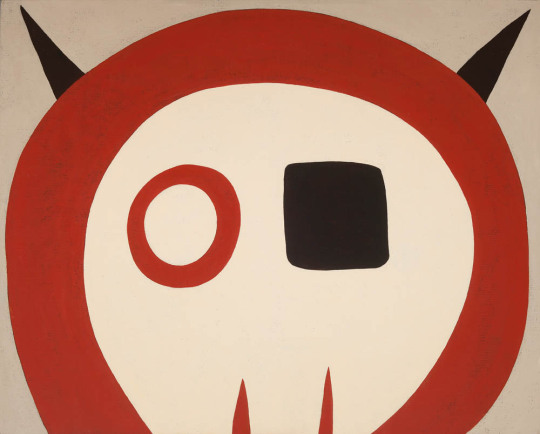
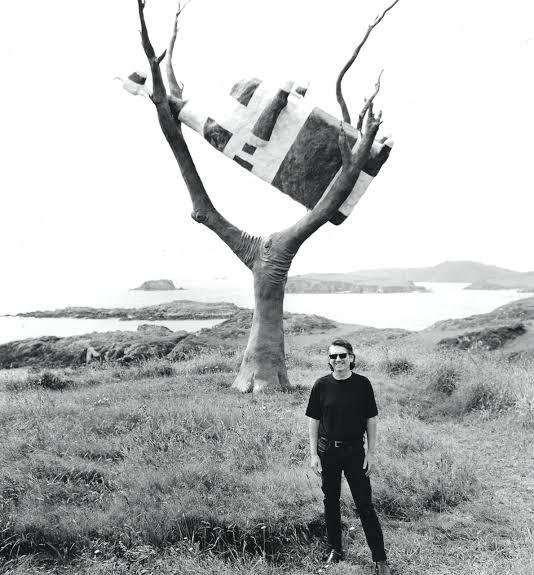
John Kelly has been described variously as an awkward bugger (Fergal Gaynor, 2007) and a free radical (Guangzhou Triennale, 2008), and whilst these observations are no doubt true his awkward radical behaviour leads to some interesting results.
John Kelly was born in 1965. His father, from Cork, and mother from Bristol, the family immigrated to Australia the same year. Due to his birth, heritage and circumstance John now holds three passports and therefore is an Englishman, an Australian and an Irishman. Kelly has lived in all three countries and for the past two decades has resided in west Cork, Ireland. His work has been collected into the Yale Center for British Art, USA, the National Gallery of Australia, the Crawford Gallery, Ireland and the Guangdong Museum in Guangzhou China, MONA, Tasmania, Art Gallery of New South Wales, Art Gallery of New South Wales, etc.
In 1985 Kelly obtained a Bachelor of Arts (Visual Arts Painting) from RMIT University, Melbourne, where he also completed his Masters of Arts in 1995. As a winner of the 1995 Anne & Gordon Samstag International Visual Arts Scholarship, he travelled to London to study as an Affiliate Student at the Slade School of Art from 1996 to 1997.
As a painter, sculptor and printmaker Kelly engages across mediums and also writes, having written for Art Monthly (Australia & UK) and Circa magazine (Ireland), The Jackdaw (London) and Daily review (Australia). In 2017 he was nominated for a Walkley Award for Arts Journalism.
6 notes
·
View notes
Photo


Keith Haring - Design Activism Through Symbolism
#JOESAOCSKO#rmit journal#design activism#keith haring#art#design#symbolism#symbol#fashion#fashion design
5 notes
·
View notes